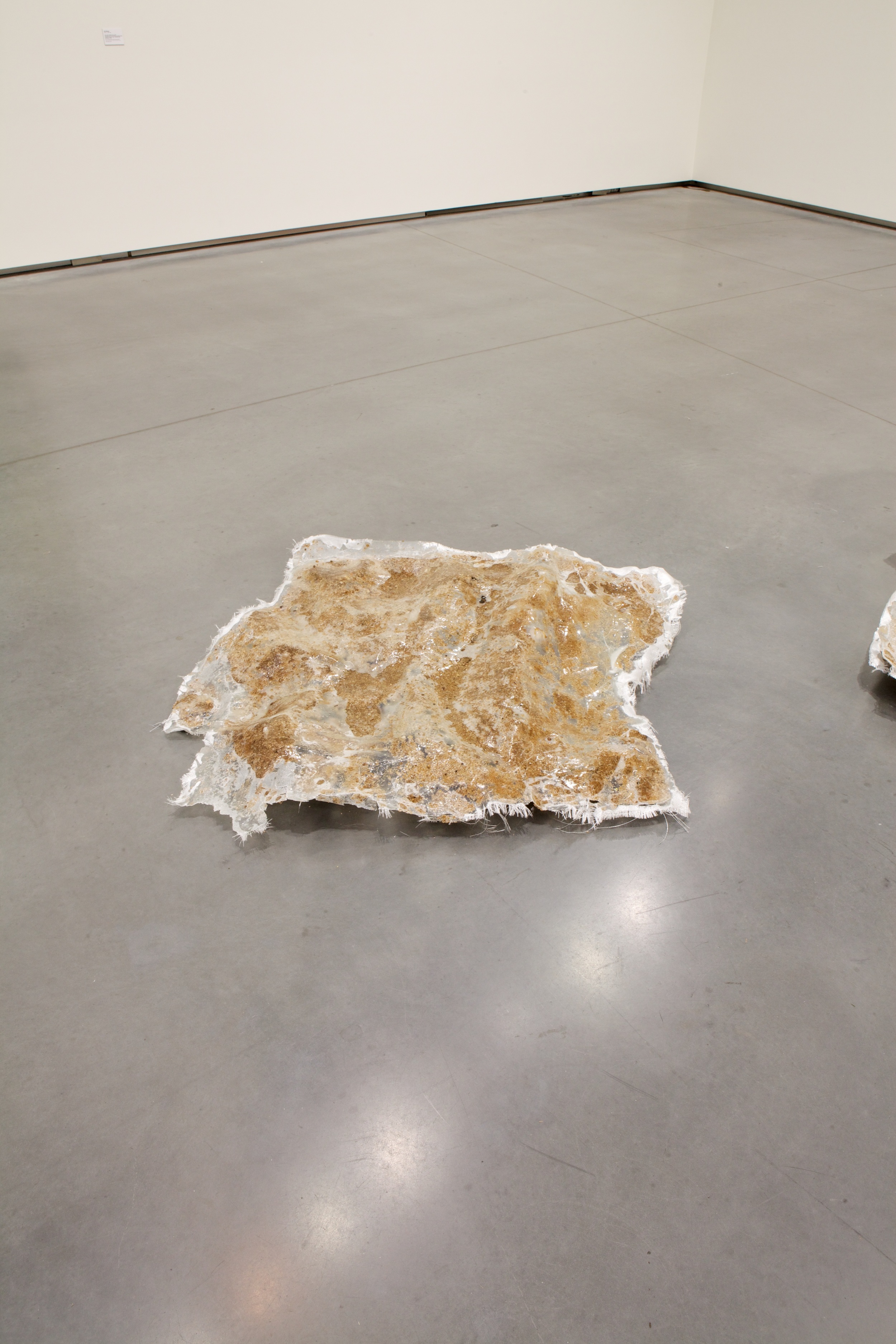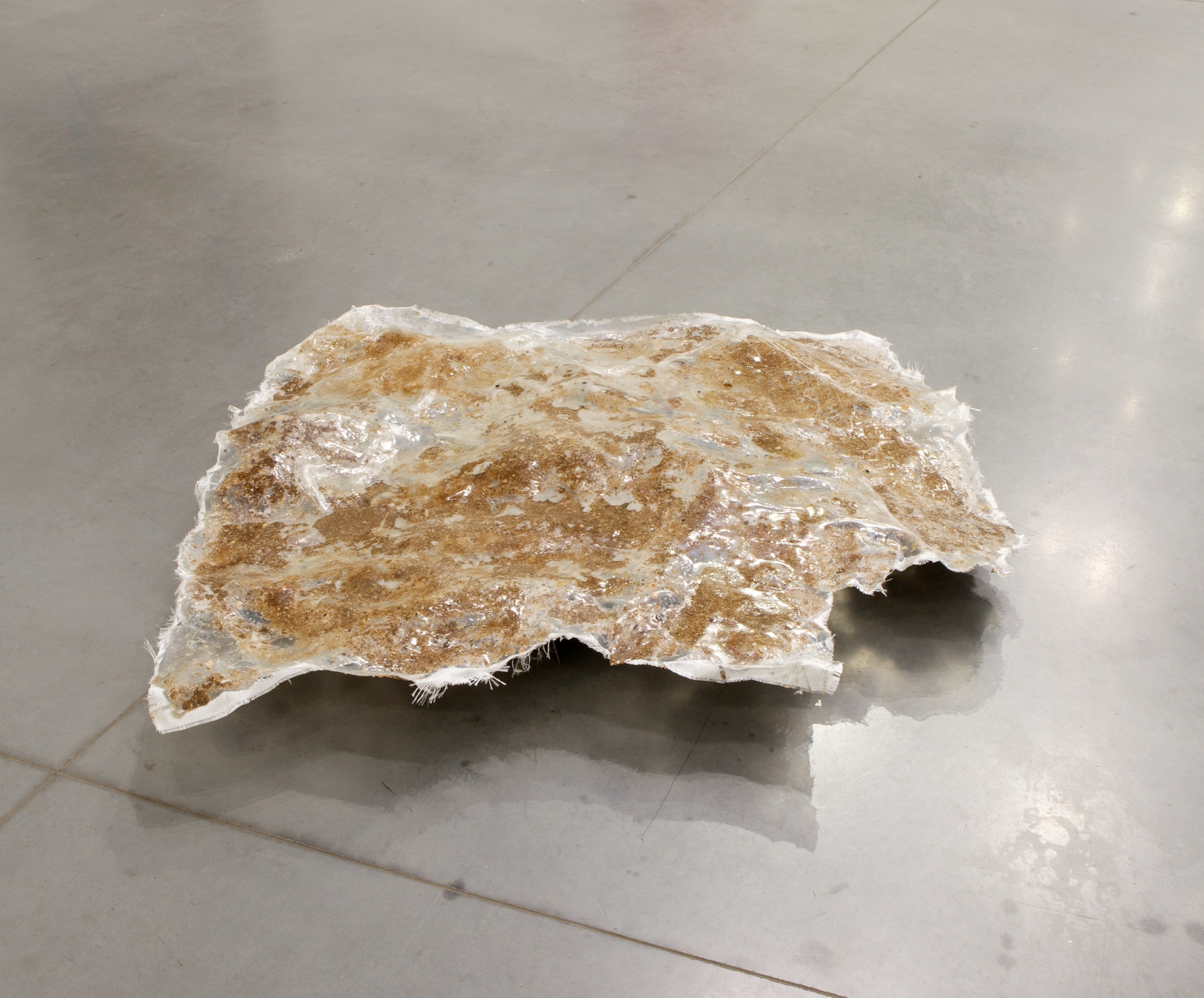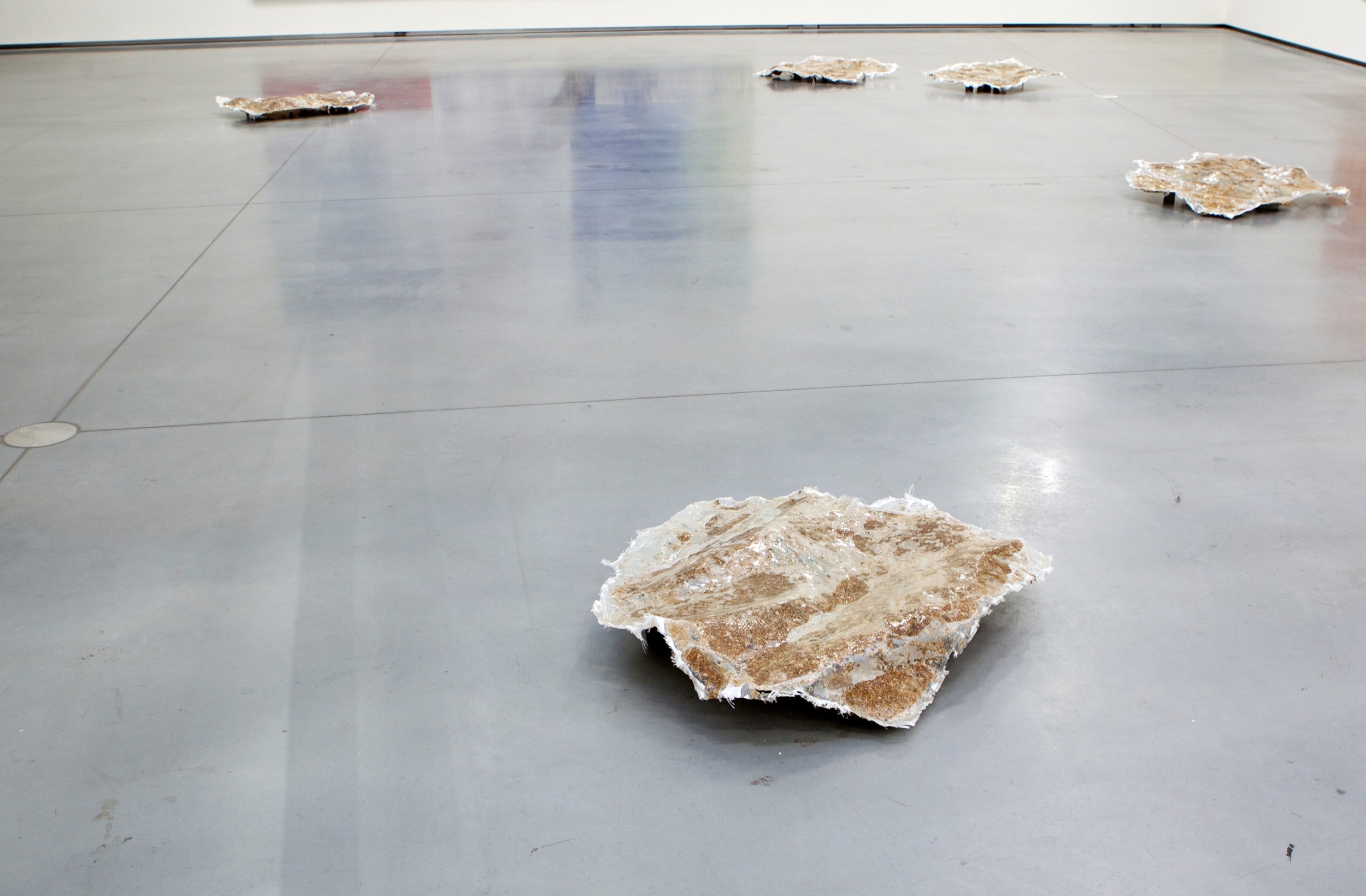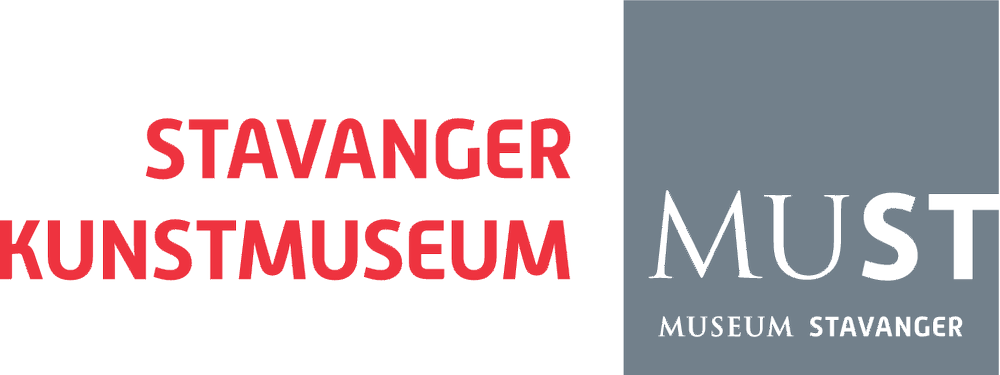


Tiril Hasselknippe
Born 1984, Arendal. Lives and works in Oslo.
Tiril Hasselknippe’s art cannot easily be categorized – but clearly, her works involve the sculptural abstraction of commonplace objects. We see some of their aspects as related to Minimalism, Process Art, Land Art, poetry and subjective experience. Hasselknippe herself refers to additional sources of inspiration such as design, science fiction, architecture and fashion. She supplements her visual art with poetic texts consisting of found text fragments in combination with her personal observations.
From an art historical perspective, we find points of contact between Hasselknippe’s works and minimalist art by the likes of the American West-Coast artists DeWain Valentine and John McCracken. In addition to influence from Minimalism’s geometric language and industrial materials, these artists drew on popular culture, design and architecture. Elements of the same sources of influence can be seen in Hasselknippe’s sculptural treatment and deconstruction of everyday forms, for instance a sofa or a car – or her abstracted “surfboard” sculptures cast in plastic polymer.
While some of Hasselknippe’s sculptures retain a certain rootedness in ‘reality’ (e.g., the deconstructed sofas or the formal similarity to a surfboard), the work 29 Palms (Earth Grid) 1-5 (2014) consists of five purely abstract floor-based sculptures. This work is a further development of her interest in abstractions that are rooted in nature. In this respect she builds on the legacy of Norwegian artists such as Jakob Weidemann, Inger Sitter, Carl Nesjar and Ludvig Eikaas. Weidemann’s Skogsbunnbilder (Forest Floor Pictures) from the late 1950s are good examples of Nordic nature-based abstraction, seeing as how he managed to suggest moist and dense undergrowth with colour fields built from pastose brushstrokes. Even through theSkogsbunn series may at first appear nonfigurative, the abstract expression is closely related to the experience of nature and colour and the textures that can be observed in real landscapes. Hasselknipper’s sculptures expand on this unique Nordic nature-abstraction, inasmuch as they perpetuate the abstract landscape tradition whilst still being contemporary in the choice of materials and expression.
To make the sculptures, Hasselknippe made casts of segments of typography in a California desert. Into natural fissures in the sand, she poured plastic resin – a synthetic, unpretentious material often used to make cars, boats and surfboards, and which can in turn symbolize a contrast between nature and culture. While these sculptures can be seen as purely abstract forms, they also can be read as directly indexing nature, due to the grains of sand affixed to the plastic cloth used in the casting process. This can remind us of certain aspects of Land Art, for instance the way Robert Smithson explored nature, either by intervening in topographical segments, or by showcasing elements from nature in gallery spaces. In contrast to how several Land Art-artists use nature as an object in a sculptural process, Hasselknippe focuses on the subjective and all-consuming experience of nature. She has described how California functions as a geographical muse for her works. Like several of her productions, 29 Palms (Earth Grid) 1-5 is inspired by a personal experience: in one of California’s sublime nature parks, she suffered a head-on car collision that almost ended in a fatality. The sculptures have vulnerable and almost immaterial qualities that stand in contrast to the sand’s rough surface. The plastic’s translucent ‘skin’ adds an illusion of water, even changing character in relation to the public’s movement and the direction of cast and reflected light. With their experimental materials and sculptural expression, Hasselknippe’s works share much in common with Modernism’s lyrical nature-abstraction, especially through her emphasis on the sensuous experience of natural elements translated in abstract forms.
Text by: Ida Sannes Hansen

